The world market of armored vehicles. Part of 2
Russia seeks to compensate for the economic sanctions imposed on it by Western countries and is trying to almost completely change its fleet of obsolete armored vehicles, move away from Soviet technology in order to meet or exceed the opportunities available to Western Europe and North America. In May 2015 and 2016, the country appeared in the headlines of the world press with its parades in honor of Victory Day, showing them many of their new cars. Among them are the Armata family of tracked platforms (universal combat platform / BMP T-15), which will already begin to replace heavy Soviet-era armored vehicles in 2016. Uralvagonzavod Research and Production Corporation is the leading manufacturer of the main combat tank (MBT) T-14, which is armed with a 125-mm smoothbore gun of an external installation with an ammunition load of 32 rounds in the automatic loader and, according to the developer, has a rate of 10-12 rounds per minute with a maximum effective range of 8 km. The army plans to get 2300 T-14 tanks to replace its T-72M3 and T-90 MBTs. Likewise, the heavy T-15, BMP and armored personnel carriers Kurganets-25 and Boomerang 8x8, ultimately, should replace the obsolete BMP and armored personnel carriers of the Russian army. In addition, the 2S35 Coalition-SV self-propelled guns will replace the 2S19 Msta-S artillery systems currently in service with the ground forces.
Middle East
Many countries in the Middle East, including Turkey, continue to modernize their armored vehicles (BM) and buy new ones. The Middle East with the Asia-Pacific region is expected to significantly increase car purchases in the next 10 years, balancing the expected reductions in the US and Europe.
Afghan The National Army (ANA) bought Mobile Strike Force Vehicle (MSFV) armored vehicles around 600, based on the M1117 GUARDIAN Armored Security Vehicle (ASV) armored vehicle from Textron Systems. The MSFV armored personnel carriers of the Afghan army will have several options, including various weapons, including an 40-mm grenade launcher, an 7,62-mm machine gun and an 90-mm cannon. 2526 is shipping HMMWV armored vehicles. The Afghan army also received 55 X-NUMX-4-armored COMMANDO Select armored vehicles under a fixed-price contract worth $ 1 million in 4; shipments completed in February 56,2. 2016 protection kits for the shooter, 36 15 mm / 40 mm and 12,7 sanitary versions of the towers went further to the machines.
IG militants seized 2300 HMMWV armored cars from the Iraqi army in Mosul
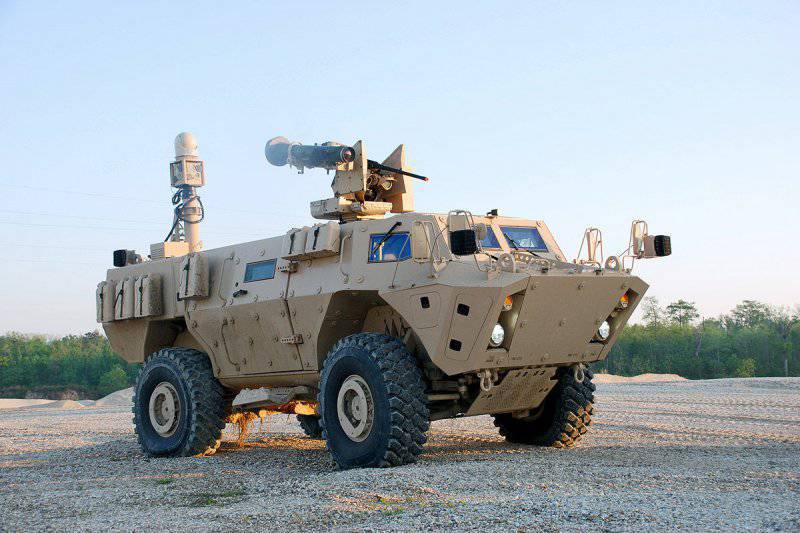
Textron Systems' COMMANDO Elite Intelligence Machine with installed MX-RSTA Optoelectronic Intelligence System from L-3 WESCAM and Kongsberg PROTECTOR DRWS remotely controlled combat module
Egypt in collaboration with the American company General Dynamics Land Systems (GDLS) assembled 125 tanks M1A1 ABRAMS from the supplied vehicle sets, but the contract worth 395 million dollars was stopped after the overthrow of the government of Mohammed Mursi. However, Mursi was planted and the joint production of tanks was resumed; Five towers of the tank M1A1 ABRAMS were recently delivered to Egypt.
Government Iraq requested 16 tracked supply vehicles M548A1, eight M113A2 ambulances and eight HMMWV vehicles, and in addition, 1050 lightweight COUGAR armored vehicles. In September, 2015 of the United Kingdom put large-caliber machine guns and nearly half a million rounds of 1,6 a billion pounds sterling to the Kurdish formations, while the Iraqi government had previously received M140A1SA Abrams tanks from the United States. According to BAE Systems, Iraq intended to buy a BRADLEY 1 BMP as part of a huge purchase of US military equipment worth 200 billion dollars, including 4 STRYKER armored personnel carriers, helicopters and anti-aircraft complexes. Also passed information about the negotiations with Russia on the BTR-50.
In 2012, the armed forces Israel announced plans to develop a new family of light BM, as well as the modernization of the tank MERKAVA Mk4. Meanwhile, the government announced that a contract was signed with the United States to upgrade 100 heavy ACHZARIT armored personnel carriers with a deadline for completing work in the 2017 year. The Israeli army also wants a more heavily armored BAM NAMER in order to replace the thousands of M113 vehicles still in service, but the production of vehicles is not going as fast as expected. Approximately 600 NAMER BTR should be supplied, but today, according to some estimates, fewer 150 machines have been manufactured due to budget constraints.
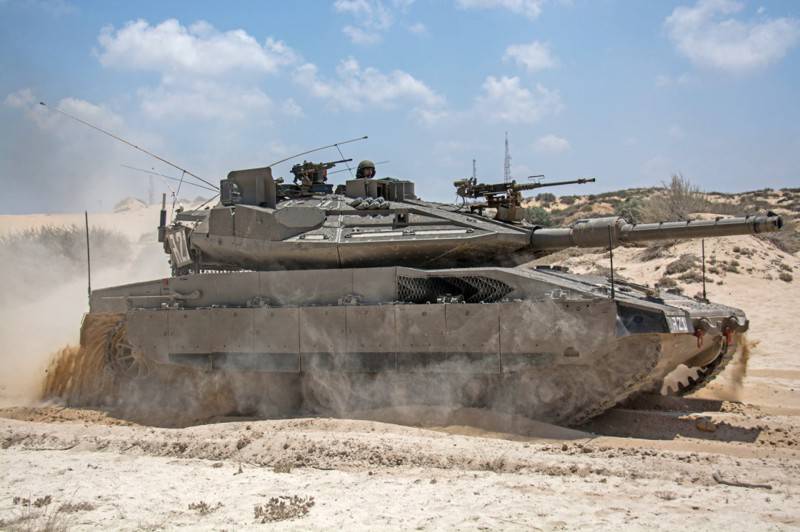
In 2015, the Israeli Ministry of Defense announced that the government would make a positive decision to significantly increase the production of tanks MERKAVA Mk 4 (pictured) and the BAM NAMER when it announced 2015 of the year in March, which doubled its order for components for these two platforms
The Israeli army is also developing a new armored vehicle in the 8x8 configuration, called the EITAN. A prototype of this 35-ton system was made, and the goal of the program is to start production of the machine in the 2020 year. Ultimately, the EITAN should change all Israeli M113 BTRs. Israel also intends to develop a promising tracked vehicle under the Carmel program. It will be a platform of 32 tons, which can become the basis of the process of future replacement of tanks, starting from the end of 2020's. Earlier, the Israeli army showed little interest in wheeled armored vehicles and, if desired, could easily buy American armored personnel carriers STRYKER 8x8. In 2004, Israel bought three STRYKER cars, but during the tests, many flaws emerged and the topic was closed. The basic version of the STRYKER weighs approximately 16,5 tons, while the protected mass of the promising EITAN machine will be 35 tons thanks to enhanced active and passive protection. In the Israeli army, it is believed, as shown by the example of NAMER and EITAN, that high levels of protection are required on a modern battlefield, unlike other armies that want to get better mobility by reducing levels of protection. Perhaps the fact that the promising CARMEL machine is so light indicates a change in Israeli thinking or, on the other hand, certain achievements in reduced-weight protection systems.
In February 2015, the armed forces Jordan ordered the 50 BMP MBOMBE 6x6 developed by the South African company Paramount Group, which are manufactured at the KADDB plant (King Abdullah II Design and Development Bureau). It is assumed that the 4 heavy tracked armored personnel carrier MAP (Multipurpose Armored Platform), which is a modification of the TARIQ tanks, which in turn are modernized versions of the British CENTURION tanks, was also ordered. In addition, up to 80 armored vehicles CENTAURO 8x8 can be purchased from the presence of the Italian army.
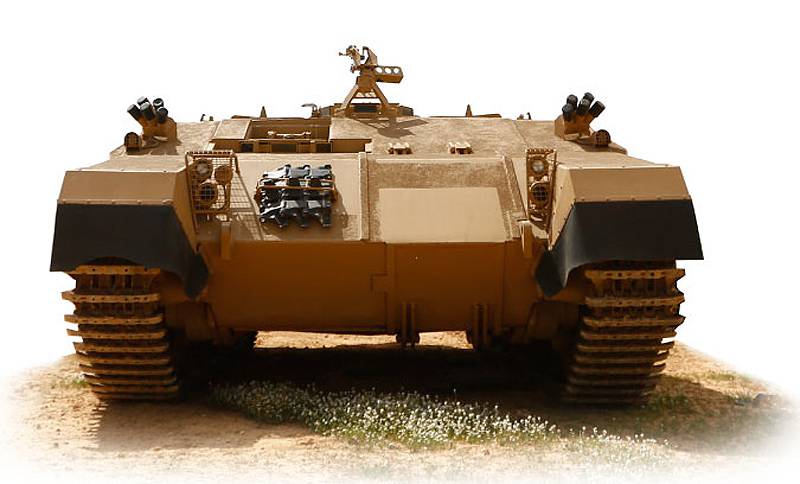
Jordan heavy tracked armored personnel carrier MAP
According to media reports, Kazakhstan wants to collect licensed armored vehicles of the Turkish company BMC. The state-owned defense enterprise, Kazakhstan Engineering, reported on the negotiations on the production of BMC EFE 4XXXUMPH software systems and CMC 4-235, 16-380 P 26-6 APC systems, BMC 6-350 Z KIRPI 16XXNNXX, BMC 4-4 Z KIRPI 250XXNNXX, BMC 10-XNUMX Z KIRPI XNUMXXXNNXX, and BMC XNUMX-XNUMX Z KIRPI XNUMXXXNNXX BMC XNUMX-XNUMX Z. In addition, the Kazakh military bought a COBRA armored car from the Turkish company Otokar. The joint venture, organized by the South African company Paramount and the Kazakh side, will manufacture several models of armored vehicles under license (namely ARLAN MRAP, a police car NOMAD and BMP BARYS) in Astana with the possibility of selling a significant part of products for export.
In November 2015, Saudi Arabia signed a contract with France for the supply of armed forces Lebanon French weapons on 3 billion dollars. Under the terms of the deal financed by the kingdom, Lebanon will receive 110 new VAB Mk3 armored personnel carriers, 30 VAB Mk1 armored vehicles and 100 SHERPA armored vehicles.
It is assumed that the internal security service Qatar will be the first customer of HIGUARD machines manufactured by Renault Trucks; 22 vehicles will be delivered along with five SHERPA 4x4 light armored vehicles.
In 2015 year Saudi Arabia increased its defense budget by 17%. This is the largest increase in military spending in one country, with stunning 2014% of GDP spent in 10,4 year. Most of the armored vehicles in the country are imported, although the BMP AL-FAHD and the BTR AL-FARIS 8-400 are manufactured by the local company Abdallah Al Faris Company for Heavy Industries. In February 2015, Saudi Arabia announced that it had signed a contract worth 10 billion dollars with GDLS-Canada for the supply of BM. The 14 contract for years includes training and logistics, but no additional information was provided. In accordance with a contract with France, the Saudi government ordered XAVUMX ARAVIS MRAP machines from the French company Nexter Systems.
Turkey set a goal to achieve independence from overseas deliveries to the 2023 year, so investment flows in modernization programs, including new armored vehicles. Turkey is currently making a lot of efforts to become a key global exporter in the next decade, and there is a reason for this - at the core is a strong economy and the second country in military power in NATO. The Defense Industry Secretariat has identified Central Asia and the Asia-Pacific region as priority foreign markets, which the Turks hope will be won through contracts, including technology transfer, and close cooperation.
The armored PARS 4x4 armored vehicle of the Turkish company FNSS at the IDEF 2015 exhibition. The platform was developed as part of the Turkish army’s mobile anti-tank complex program.
The MILDESIGN competition of FNSS Defense Systems is evidence of market confidence, encouraging innovation and pushing the boundaries of engineering, which may (once you think) push the state to make a decision on procurement. FNSS has been holding this competition since 2011, the goal of which is to search, inspire and promote talented designers and defense engineers. As stated in the FNSS, the main goal of the competition is “to support the development of domestic military products in Turkey”. Every two years at the IDEF, held in May, the winners of this competition are announced.
At IDEF 2015, FNSS presented its wheeled armored vehicle PARS 4x4, the creation of which was determined by the requirements of the Turkish army’s mobile anti-tank complex program. In the same place, FNSS showed an experienced operating model of its KAPLAN-20 BMP. Indeed, 2015 was a landmark year for this Turkish defense company, which presented a new car or new options at each major exhibition. It is worth mentioning that the company last year showed a floating BM PARS 6x6 for conducting radiation, chemical and biological reconnaissance.
Floating armored vehicle PARS 6x6 RCB-intelligence
OBT ALTAY, created by Otokar, is an obvious example of Turkey’s own capabilities. The first of its kind tank ALTAY was developed with the technical assistance of South Korea. The domestic tank will be used by the Turkish army, but supplies to the states of the Middle East and Asia are not excluded. Saudi Arabia is one of the most promising customers, because in 2013, the two countries signed an agreement on the defense industry, providing for increased cooperation on future programs, which implies future cooperation in the development, production and procurement of equipment and weapons, and services. In March, 2015, the Turkish engine maker Tumosan, signed a contract worth 190 million euros with the Defense Industry Secretariat to build and develop the engine and transmission for the ALTAY tank. Turkey plans to buy the first batch of 250 tanks, while subsequent orders may increase the number of tanks to 1000.
Currently, there are a number of other projects and programs for the modernization and development of armored vehicles, including the TULPAR heavy infantry fighting vehicle (which will be fighting in some combat formations with the ALTAY MBT); floating armored personnel carrier ARMA 6x6 and 8x8; special tactical armored car; and AV8 8x8 BTR. The Turkish defense industry concentrates around itself the full power of the country's economy, while being its driving force. The next decade will be a period of growth for Turkey as a major exporter of armored vehicles. Domestic Turkish industry attracts close attention of potential customers from many countries of the world, primarily the Middle East and Asia.
United Arab Emirates (UAE) signed a request for proposals for the supply from the USA of 4569 MRAP category vehicles from the presence of the US Army. Most of the order, which is more than 3000 machines, will be MaxxPro by Navistar Defense, and the remainder of the M-ATV machine is from Oshkosh and CAIMAN Multi-Terrain Vehicle (MTV) from BAE Systems. The UAE is upgrading the 135 BMP-3 and LECLERC tanks. Also, the country has a need for 600 wheeled combat vehicles 8x8, while ordering five Patria AMV 8x8 vehicles for evaluation. UAE forces have also ordered NIMR armored vehicles from local company Tawazun Holdings 1800. Last year, Emirates Advanced Research and Technology Holding (EARTH) announced a contract worth 235 million dollars to procure 750 MRAP machines that Oshkosh sold to the UAE in 2013.
CAIMAN Multi-Terrain Vehicle (MTV) is in service with the UAE Army
Africa
The situation in defense and security in Africa is constantly changing, including financial and administrative rules, and at the same time forces many national defense budgets to rise to record levels at a time when global spending continues to fall. Major conflicts and the fight against radical groups in recent years have been a succession of successes and failures for many governments. In the west of the continent, in Mali, tensions remain, despite the peace agreement signed in 2015; new rebel groups are divided into smaller ones and undertake new raids. Similarly, the seventh year in Nigeria, with varying degrees of success is the campaign against Boko Haram group (sworn allegiance to the Islamic State), which killed 15000 people. Fighting was also intensified in the east of the continent. In August, 2015, Al-Shabab, captured the base of the African Union in Somalia. After the overthrow of the government in 2011, the civil war in Libya continues, many groups are fighting for political and religious rule, that in the foreseeable future will not allow mentioning the country in such reviews. From ocean to ocean, unrest and instability in recent years have created significant problems in Sudan, South Sudan, Central African Republic, Burundi and other countries.
As for the BM, the local industry still stands on the wing, but is no longer limited to South and North Africa. Nigeria and Uganda, for example, have their own policies for local production and assembly. Denel and Paramount Group believe that African countries will increasingly attract African brands and the advantages that they can offer to the regional market.
Arms shipments to African countries are carried out in fairly large quantities. China is currently the third largest exporter weapons in the world. His clients primarily include Sudan, Tanzania, Morocco and Algeria; in smaller volumes, Namibia and Cameroon are procured. Moreover, all countries acquire equipment and weapons of relatively low technological complexity - in accordance with financial capabilities. Russia has long been a major supplier of a number of African countries, and Ukraine has taken its niche in this business, selling used military property. The Indian car company Tata Motors has supplied 585 military vehicles to various African countries to operate them in the UN peacekeeping mission in Mali (MINUSMA).
In 2014, Dyncorp International entered into agreements with African suppliers and OTT Technologies Mozambique to manufacture vehicles for African peacekeepers in Mali. In this industry group is responsible for the procurement and management of production and transportation of 115 APCs for MINUSMA under contract with the US State Department in the amount of one million dollars within 173 (AFRICAP) contract under the program of the African peace process. Meanwhile, the Mozambican Armed Forces are also fighting the local Renamo grouping, despite the fact that less than 10% of the fleet of armored vehicles are serviceable.
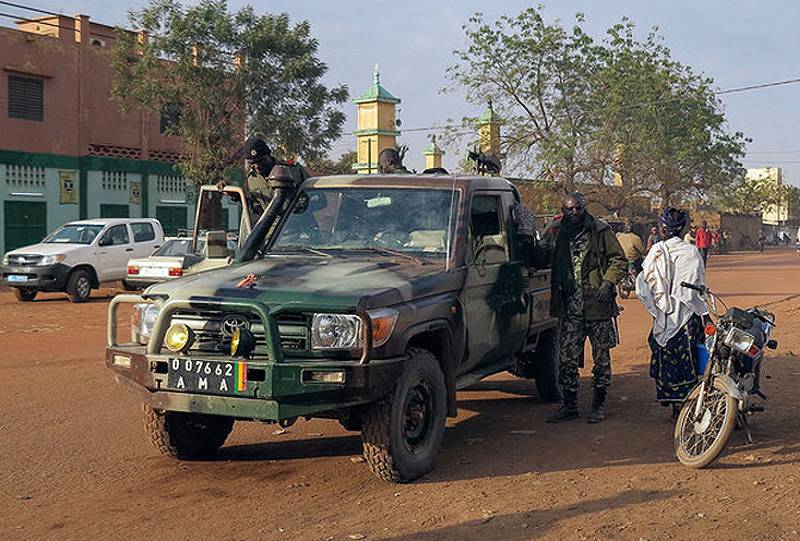
Mali special forces along with French soldiers in a Mercedes-Benz tactical armored car
The Dutch contingent in Mali mainly conducts intelligence operations and collects information, serving as "eyes and ears" of this international mission. Soldiers from the Marine Corps and the commando corps work in three groups. They have various types of vehicles at their disposal, including: BUSHMASTER light armored; Mercedes-Benz tactical armored cars; tactical reconnaissance vehicles FENNEK
Algeria remains the largest buyer of weapons in Africa. In the middle of the year 2014 Rheinmetall company and project developer - Ferrostaal Industrial Group signed a contract with the country on the 980 2 FUCHS armored personnel carriers, and construction of a plant in a deal worth billion euros 2,7. In total, between Germany and Algeria signed contracts in the military sphere in the amount of approximately 10 billion euros. Algeria also cooperates with the UAE in the framework of an agreement on the joint production of NIMR vehicles for the military, police and peacekeeping forces. In 2014, Algeria concluded third contract with Russia for the supply tanks T-90 (three contracts, 2006, 2011 and 2014 years, delivered a total of 308 T-90SA) in addition to the existing 325 tanks T-72, and 150 tanks T-62 and 270 tanks T-54 / 55, which is nearing the end of service life.
Although in Angola formal and peaceful time, but in 2014, she spent more on defense than any other African country south of the Sahara, and this is 6,8 a billion dollars. In 2013, the government ordered 45 CASSPIR New Generation 2000B machines from Denel. This includes the APCs APCs 30, 4 fire support vehicle (with two 23-mm guns or recoilless rifles), two command vehicles, two recovery vehicles, two sanitary, three supply a tanker truck with water and tanker truck diesel.
Cameroon as another country is leading the fight against the Islamists, recently purchased armored infantry Type 07P, and also showed a military parade install anti PTL-02, purchased from China. In November, 2014 of Germany presented the Cameroonian army 60 of Mercedes WOLF and 60 SUVs to UNIMOG trucks to reinforce the fight against the rebels.
Armed forces Djibouti in 2015 was rolled out for everyone to see one of his anti-setting Norinco WMA301, which complemented the growing fleet of military vehicles, including armored personnel carriers and COUGAR MRAP RG-33.
WMA30 anti-tank installation of the Chinese company Norinco on the parade in Djibouti
Although the defense budget Ethiopia shrinking, the country retains considerable military power, which is based on hundreds of T-72 and T-55 tanks. The local industry has the capacity to repair and restore armored vehicles of the Soviet era. Ethiopian armed forces are proactive in patrolling their borders in an aggressive manner and delivering preemptive strikes on emerging threats. In July, 2015, 3000 units of armored vehicles crossed the border with Somalia to carry out attacking actions against the Al-Shabab group.
Gabon signed a contract for 12 armored vehicles ARAVIS company Nexter Systems to equip the battalion, which carries peacekeeping service in the Central African Republic. The first car was received in June 2015.
OTT Technologies in 2014 completed the delivery of 12 light HUNTER armored vehicles to Ghana under a contract worth 850000 dollars. In 2015, it was reported that the Ghanaian armed forces received billions of dollars from 1,7 military equipment from Germany, including military trucks, maintenance equipment, and 4x4 vehicles. All equipment will be operated in the reserve troops of the Economic Community of West African States.
In 2015 year Kenya increased its defense budget by 20% to 861 million dollars. Meanwhile, the United States provided assistance to the armed forces of this country in the amount of 100 million dollars to strengthen the fight against the Al-Shabab group. In connection with the increase in the number of cases of terrorism and banditry in the country, the Kenyan police have begun the process of modernizing their equipment, which provides for the purchase of armored personnel carriers, operational management machines and ambulances. In February, eight companies were invited to present 2015 for the presentation of their solutions that could satisfy the country's military equipment needs. In the 2011, Kenya also started to purchase armored vehicles 67 PUMA M26-15 MPV, the company OTT Technologies, while later machines were ordered PUMA M36 Mk 5 MPV for MINUSMA mission.
Armored personnel carrier PUMA M26-15 MPV of the Kenyan Army
Windhoeker Maschinenfabrik (WMF) from Namibia develops an armored evacuation vehicle 6x6 and an armored personnel carrier 8x8, and, in addition, manufactures new MkIII armored personnel carriers.
After another year of fighting Boko Haram Nigeria found itself in a difficult situation, because, due to the international embargo, the import of military equipment became impossible. The country has security problems and, as a result, the demand for civilian armored vehicles has increased dramatically. Politicians and wealthy Nigerians, according to some estimates in 2014, spent over 5 million dollars on armored vehicles. In the same year, the cost of armored vehicles imported into the country, including special and passenger cars, amounted to more than 60 million dollars. The Nigerian police received the latest 2015 patrol vehicles at the start of 263; 2564 had previously delivered a new police car, which former President Jonathan promised to strengthen peace and increase safety in Nigeria. The police now has in service with several models, including 170 pickups Nissan NP-300 Hardbody, 129 Nissan Frontier Twin-Cab, 50 SUV Nissan Patrol 4WD, 10 armored vehicles with double cabin Toyota 4x4 and four APCs Ford 550 4x4.
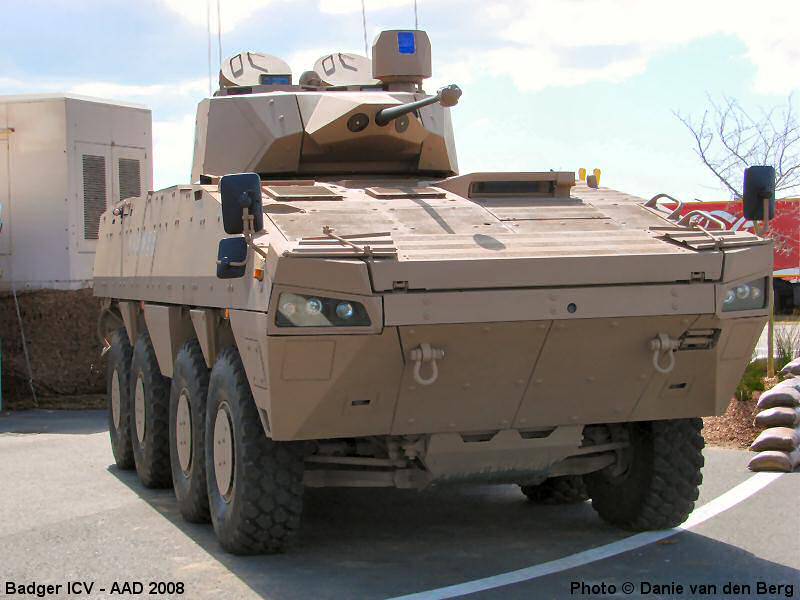
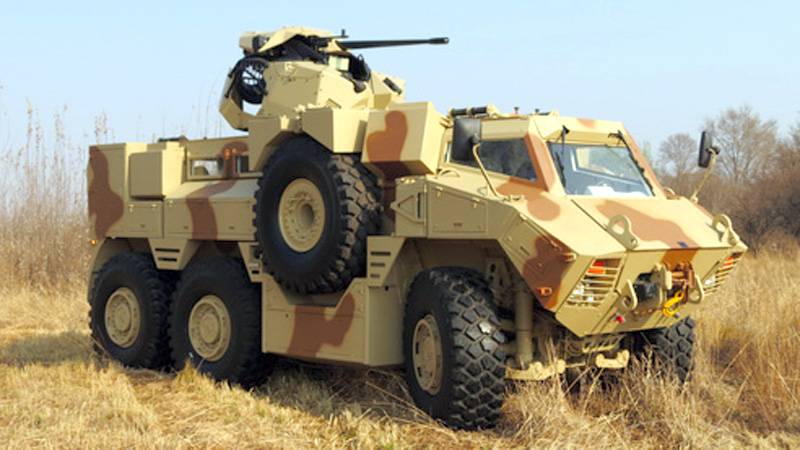
BMP BADGER 8x8 production Land Mobility Technologies (LMT) Holdings (based on the Patria AMV 8x8) with a stabilized turret Denel LCT 30 (GI-30 gun with electric double feed ammunition mmx 30 173). On the bottom photo is the RG35 4x4 armored personnel carrier from BAE Systems and its subsidiary Land Systems OMC
.
PUMA armored vehicles from OTT Technologies
The Italian government recently donated to the national army Somalia 54 military truck as part of the construction of the armed forces in this war-ravaged country.
While internal and external commitments are growing, the defense budget South Africa continues to experience significant difficulties. 2015 billion dollars allocated to 3,8 in real terms means a reduction due to inflation in 5%. However, the government is aiming at a modest increase in 5,7% and 6,36% (2016 and 2017 respectively). The South African armed forces continue to be updated as part of the latest “Defense Analysis”; they need to get in 2016 year project Hoefyster 238 BMP BADGER from the company Denel (based on the Patria AMV with modifications under the South African requirements). In accordance with the Sapula and Vistulaand projects, an accelerated replacement of the CASSPIR, MAMBA and SAMIL machines is also underway. The shrinking global market for MRAP vehicles hit South Africa hard. However, the main event that will have a significant impact on the development of the armored vehicles market in the country, as well as the whole of Africa, occurred in April 2015. Paramount Group, a leading local manufacturer, bought DCD Protected Mobility together with property and personnel. The deal allows Paramount to significantly increase its production and expand its portfolio with production potential to 400 machines per year.
Although the South African army is armed with OLIFANT tanks and the old British tanks CENTURION modernized by their own forces, most of the armored vehicles remain wheeled. Operating conditions in South Africa prioritize wheeled vehicles; It is more efficient than tracked, and in most cases is also more affordable financially.
In April 2015, Denel Systems completed the acquisition of Land Systems South Africa (LSSA) from BAE Systems for the total cost of 80 million dollars. As part of BAE Systems company LSSA sold in large quantities its RG32M MRAP armored vehicle in Finland, Ireland, Saudi Arabia, Sweden and Tanzania to perform specialized tasks. Other South African companies are also quite successful in foreign markets. For example, the firm Integrated Convoy Protection has manufactured and sold more than 600 their cars REVA (Reliable Effective Versatile Affordable) 4x4 MRAP category to countries such as South Sudan, Iraq, Yemen, UAE and Thailand.
The youngest African country Southern Sudan defined its defense budget in the amount of 850 million dollars (which is about 15% of GDP), because it is necessary to suppress the resistance of the rebels, who raised their heads about three years ago. In the country are serving Ugandan army units, particularly in Western Equatoria State, spending operations against the group "Lord's Resistance Army", but are ready to return to Juba (the capital of South Sudan) in the case of aggravation of the crisis.
In May 2014, the armed forces Tanzania received a number of Chinese amphibious tanks Type 63A and 30 tanks Type-59G. The country increased the defense budget 2015 / 2016 by 34,4% in order to recruit the army with personnel, train new recruits and purchase new equipment for the total amount of 380 million dollars.
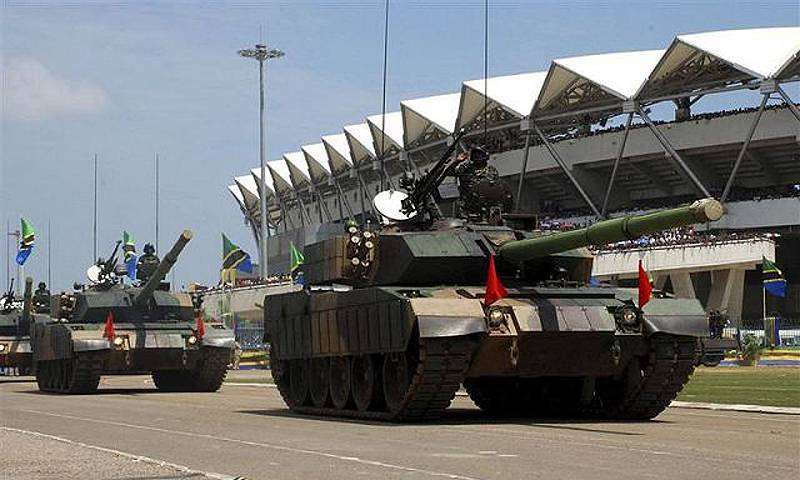
Tanzanian tanks Type-59G
Armed forces Uganda accepted the supply of 23 "specialized vehicles" as a gift from the United States, including 8 armored SUVs Land Cruiser, 12 MRAP category vehicles and three combat training vehicles. Another 15 machines are waiting to be sent to this country. Meanwhile, the Uganda army built its own workshops in the Magamaga garrison to repair and restore armored personnel carriers and other vehicles. The development of local assembly production proceeds simultaneously with the development of the metalworking industry in this country and the work of attracting and training qualified engineering personnel.
Needs a government Zimbabwe defined defense expenditures for 2015 year in the amount of 380 million dollars. About 50 million intended for the purchase of 633 armored vehicles, including road vehicles to transport personnel, along with water cannons and ammunition to break up demonstrations for military and police forces of this country.
To be continued
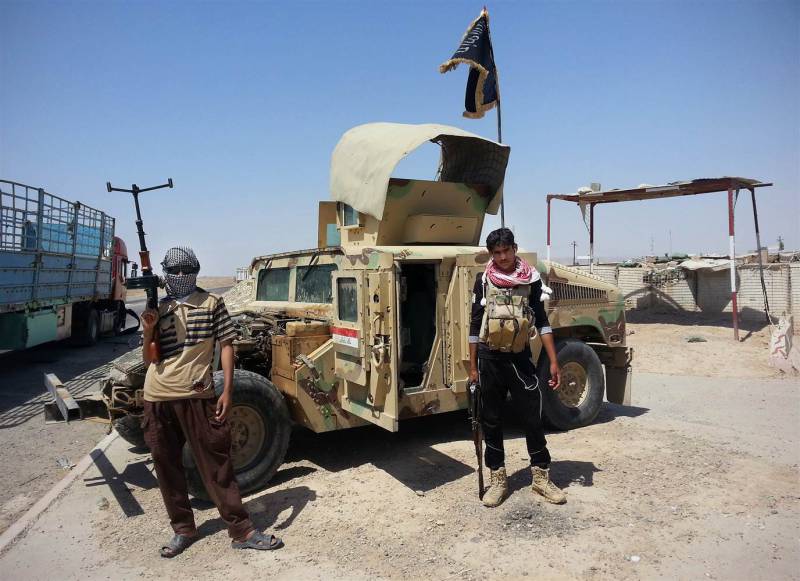
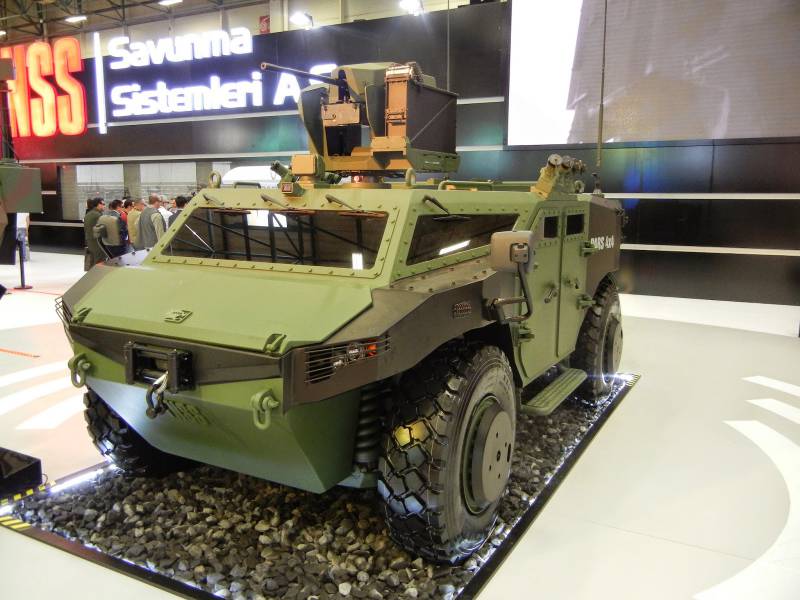
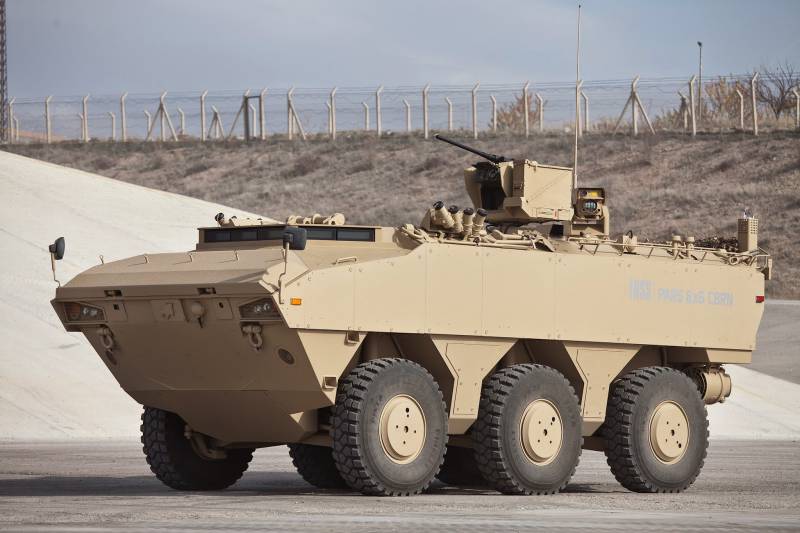
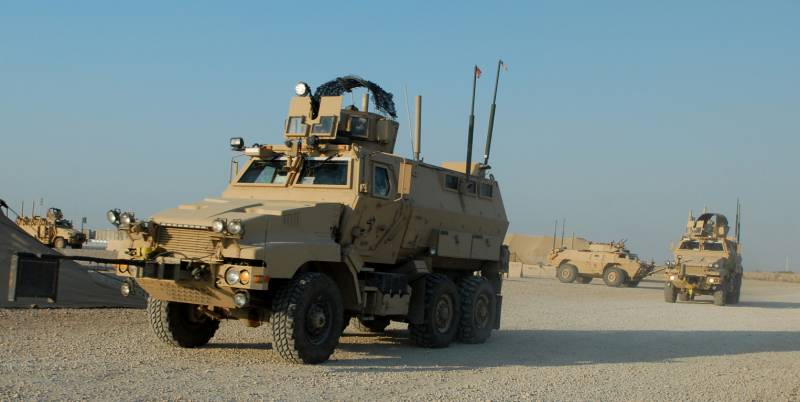
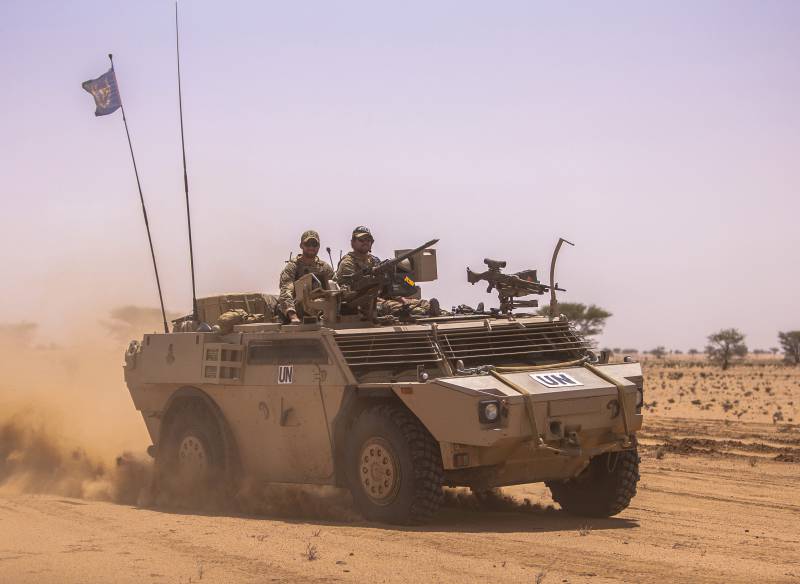
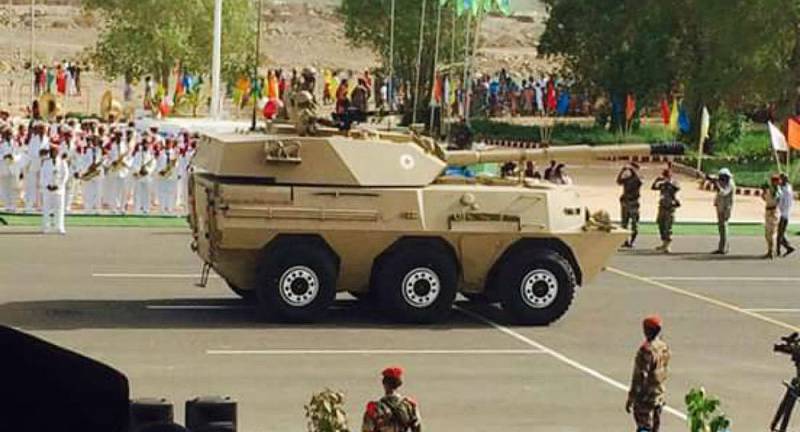
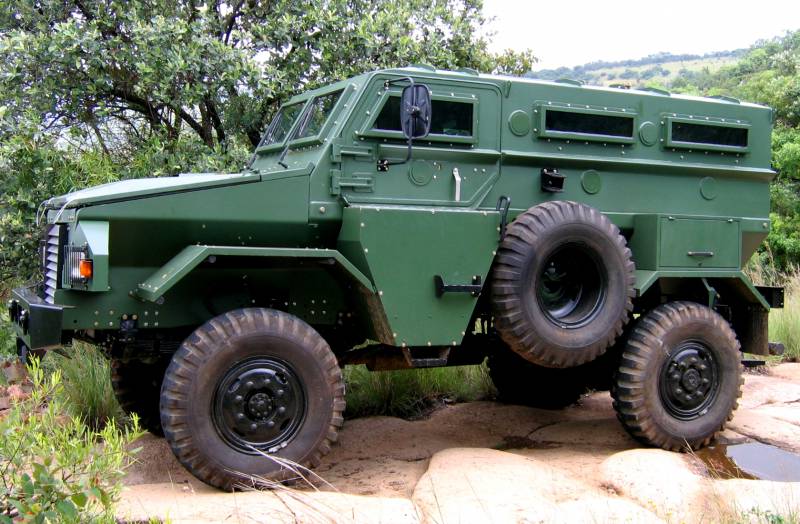
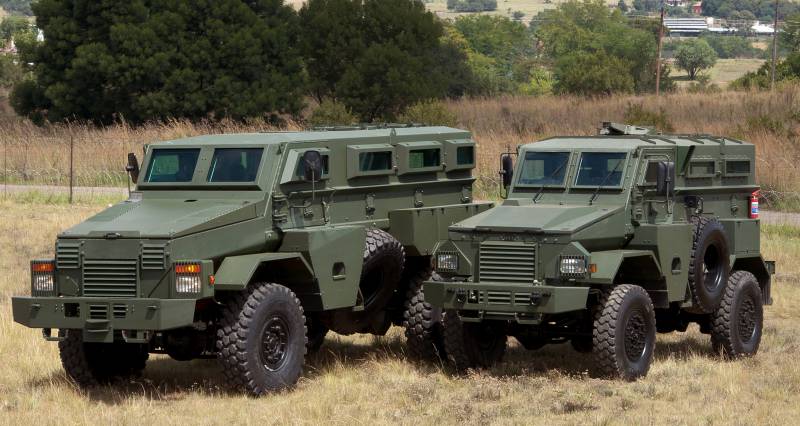
Information